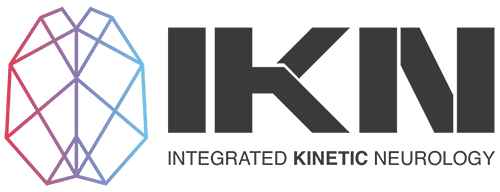
Don’t Fall for the Neuro Party Tricks
The chase for immediate changes in pain and movement within the physical therapy and movement realm is still very much at large, but at IKN, we believe that it does more harm than good. Additionally, there is an ever-growing need for many practitioners to “expand their toolbox,” in an effort to have more tools to create change, but there comes a point when there’s no more room in the toolbox. A bigger toolbox creates more confusion. A bigger toolbox creates greater ambiguity in your approach, and more difficulty in choosing the “best” tool. Every few months you might add a new and shinier tool to the box, while others rust away. The biggest difficulty with depending on tools to create quick changes in pain and/or movement, is that they provide little guidance as to how you might progress to build more robust movement qualities in your clients.
We’re certainly not disputing that quick changes in pain and/or movement are achievable using specific techniques, but are these changes addressing the unique limiting factors of your unique client, and are those changes supportive of robust movement that is required for movement in the real world? Are those techniques actually preparing the individual for the stressors and forces that they will inevitably be exposed to in the real world? “Neuro party tricks” is a term we would use to describe those tools that are randomly used to chase those quick changes, and they are rampant throughout the internet. Many of us have come across those videos where somebody checks an individual’s range of motion, then proceeds to apply a random stimulus to the body. After a few moments of stimulus application, the range of motion is re-checked, and voila – the individual may have gained some extra range of motion. This change is chalked up to the power nervous system, and we are left with a raging desire to learn this magic!
We are here to urge you not to fall for these party tricks, because we have made that mistake. You go to a course, learn an assortment of techniques and see some changes in your fellow colleagues. However, you return to your clinic on Monday morning, and there’s a client with persistent pain sitting in front of you? What do you do? You pull your new technique out of your toolbox and attempt to alter their pain, but nothing happens. Uh oh! What do you do now? You reach in and grab another technique, deliver it, and no change again. Are you seeing the trend here? Do you see how this strategy neglects the most important factor to consider when trying to facilitate change in your client? Techniques or tricks don’t respect the unique goals of the client. Techniques and tricks don’t respect the unique limiting factors or missing qualities that each unique client possesses. Techniques and tricks don’t guide you to prepare the client for the unpredictable stresses and forces that your client will be exposed to when they step outside your clinic door.
What you need is a framework to help you navigate the complexity of the human body, especially when an individual is experiencing pain. Everything changes when an individual is experiencing pain, because that pain is a top-down conscious expression of protection from the nervous system. This is a crucial insight, because the reason underpinning this top-down protection is different for every single person. Pain is a conscious experience, and most of the time these “party tricks” are merely ways to redirect an individual’s conscious attention, so it’s likely we can see some quick change. What most important to us though, is what happens a few minutes later? What happens the next day? Did they hold the change? Most likely not.
One key feature of our assessment and treatment framework at IKN, is recognizing that when an individual is experiencing pain, that strategies they use to control their movement will also change. They will typically be more conscious of their movement, overthinking how they should move in order to reduce their pain experience. This is what we view as a “feedback -focused” movement strategy. These would be akin to overthinking our movement, or from a treatment/rehab standpoint, directing our conscious awareness towards certain body regions to improve the neuromuscular connection, temporarily. However, while it’s important, you can’t rely on this type of control strategy in the real world. You don’t have time to think about every body part during real world movement. This is where “protective-focused” movement strategies become crucial. “Protective-focused” strategies are bottom-up strategies that reduce the control effort of the higher brain centers. Here, the focus is placed on integrating strategies that improve the movement features that enable our movement system to handle the forces and stresses acting on our body without the need to constantly consult with the higher parts of the nervous system. Assessment and treatment/rehab for us involves identifying:
- Where does the client need higher quality “feedback” from to support robust movement?
- What “protective” features does the client have difficulty expressing to support robust movement?
From here, treatment and rehab involves a unique blend of both “feedback” and “protective” qualities to ultimately prepare the client for real world movement. It’s NOT about building a toolbox of “neuro party tricks.” If you’re interested in learning what this consists of, and developing a new framework for assessment and treatment/rehab, then be sure to check out our next online IKN level 1 course, dropping again this coming November.
